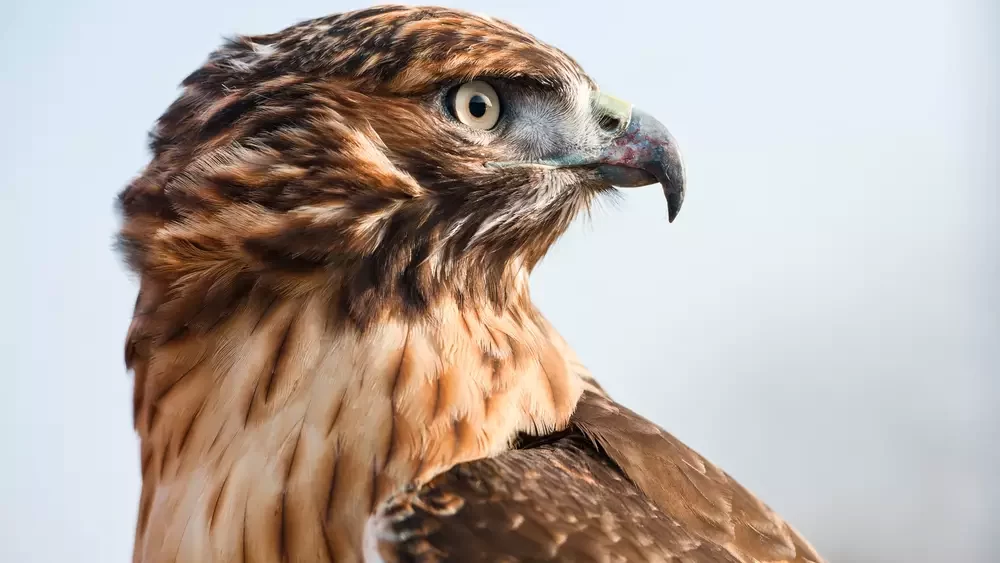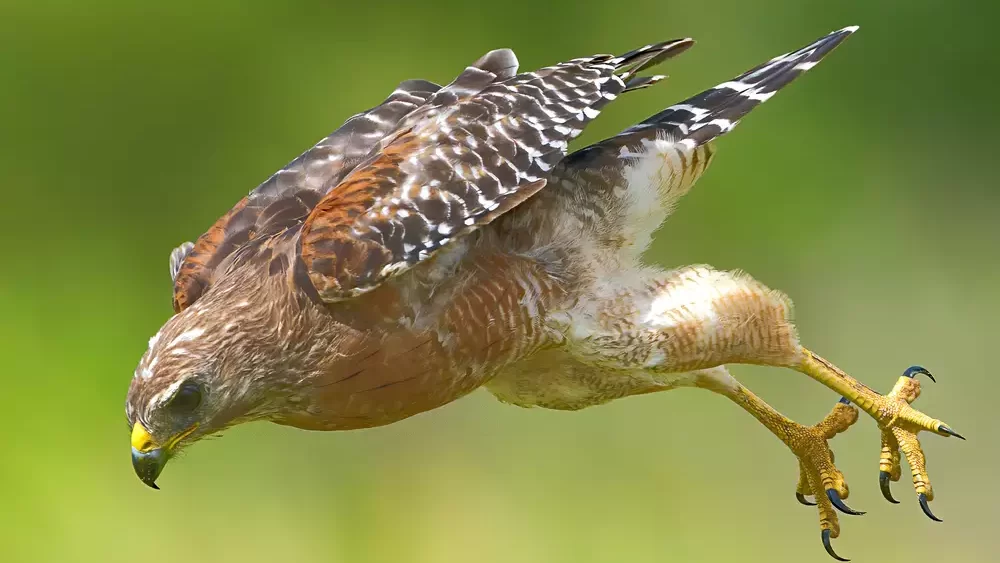A piercing cry from the sky, followed by the sudden disappearance of a chicken from your backyard coop – that’s when you suspect that the culprit might be a chicken hawk.
But what exactly is a chicken hawk, and how big are they? In this comprehensive guide, we’ll dive into the world of these fascinating birds of prey, debunking myths and revealing their true nature, size, and behaviors.
Chicken Hawk: Definition and Misconceptions
The term “chicken hawk” is a colloquialism often used to describe various birds of prey that are known to prey on chickens.
However, this term can be misleading, as there is no specific species of hawk called a “chicken hawk.” In reality, the term is commonly used to refer to three different species of hawks: the red-tailed hawk, Cooper’s hawk, and sharp-shinned hawk.
Each of these species has distinct characteristics and behaviors, which we’ll discuss in the following sections.
Red-tailed Hawk: A Closer Look
Size and Appearance
The red-tailed hawk is the largest of the three species commonly referred to as chicken hawks. Adults have a wingspan of 45-52 inches and weigh between 1.5 and 3.3 pounds. They are easily identified by their reddish-brown tails and broad, rounded wings.
Habitat and Range
Red-tailed hawks can be found throughout North America, from Alaska and Canada down to Panama. They are highly adaptable and can be found in various habitats, including forests, grasslands, and even urban areas.
Diet and Hunting Behavior
While red-tailed hawks are known to prey on chickens, their diet is mainly composed of small mammals, such as rodents and rabbits.
They typically hunt from a high perch, diving down to catch their prey in their powerful talons.

Cooper’s Hawk: A Common Culprit
Size and Appearance
Cooper’s hawks are smaller than red-tailed hawks, with a wingspan of 29-37 inches and a weight of 0.8-1.5 pounds. They have a slate-gray back, a reddish barred chest, and long, rounded wings.
Habitat and Range
These hawks are found throughout North America, from southern Canada to northern Mexico. They prefer wooded habitats and can often be seen in forests, woodlands, and suburban areas with plenty of trees.
Diet and Hunting Behavior
Cooper’s hawks primarily prey on other birds, making them a more likely predator of chickens. They are agile hunters, capable of maneuvering through trees and shrubs to catch their prey.
Sharp-shinned Hawk: A Lesser-known Predator
Size and Appearance
The sharp-shinned hawk is the smallest of the three species, with a wingspan of 17-22 inches and a weight of 0.2-0.5 pounds. They have a blue-gray back, a reddish barred chest, and short, rounded wings.
Habitat and Range
Sharp-shinned hawks are found throughout North and Central America, ranging from Alaska and Canada to Panama. They inhabit various wooded areas, such as forests, woodlands, and even suburban neighborhoods.
Diet and Hunting Behavior
Similar to Cooper’s hawks, sharp-shinned hawks primarily prey on other birds. Their small size and agility allow them to navigate dense vegetation while pursuing their prey. Chickens can occasionally fall victim to these skilled hunters, especially smaller breeds.

Protecting Your Chickens from Hawks
To safeguard your chickens from these aerial predators, consider implementing the following measures:
- Provide a secure, covered run or pen for your chickens.
- Use bird netting or wire mesh to cover open areas.
- Install perches or roosts for your chickens, allowing them to escape ground-level threats.
- Utilize visual deterrents, such as reflective tape or fake predators, to scare off hawks.
- Keep a watchful eye on your flock, especially during times when hawks are known to be active.
Conservation Status and Legal Protection
All three hawk species mentioned in this article are protected under the Migratory Bird Treaty Act in the United States, making it illegal to harm or kill them without a permit.
It is crucial to understand and respect the role these birds play in the ecosystem, and to find non-lethal methods to protect your chickens from predation.
Appreciating These Aerial Hunters
While the term “chicken hawk” might evoke fear or frustration among poultry owners, it is essential to appreciate these magnificent birds of prey for their unique characteristics and the critical role they play in maintaining a balanced ecosystem.
Understanding their biology, behavior, and size can help dispel misconceptions and promote coexistence between humans and these beautiful raptors.
FAQs
Q: What is the size of a chicken hawk?
A: The term “chicken hawk” refers to three different species of hawks: the red-tailed hawk, Cooper’s hawk, and sharp-shinned hawk. The size of these hawks varies, with the red-tailed hawk being the largest, followed by Cooper’s hawk, and then the sharp-shinned hawk being the smallest.
Q: Are chicken hawks a real species?
A: No, there is no specific species called a “chicken hawk.” The term is a colloquialism used to describe various birds of prey that are known to prey on chickens, including red-tailed hawks, Cooper’s hawks, and sharp-shinned hawks.
Q: How can I protect my chickens from hawks?
A: You can protect your chickens from hawks by providing a secure, covered run or pen, using bird netting or wire mesh to cover open areas, installing perches or roosts, utilizing visual deterrents, and keeping a watchful eye on your flock during times when hawks are active.
Final Verdict
The phrase “chicken hawk” has long been used to describe birds of prey that threaten backyard poultry, but it’s important to recognize that there is no specific species by this name.
Instead, the term refers to red-tailed hawks, Cooper’s hawks, and sharp-shinned hawks – each with its unique size, appearance, and behavior.
By understanding these birds, we can better protect our chickens while respecting the essential role these raptors play in maintaining a balanced ecosystem.